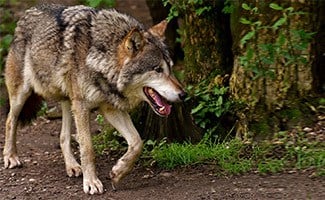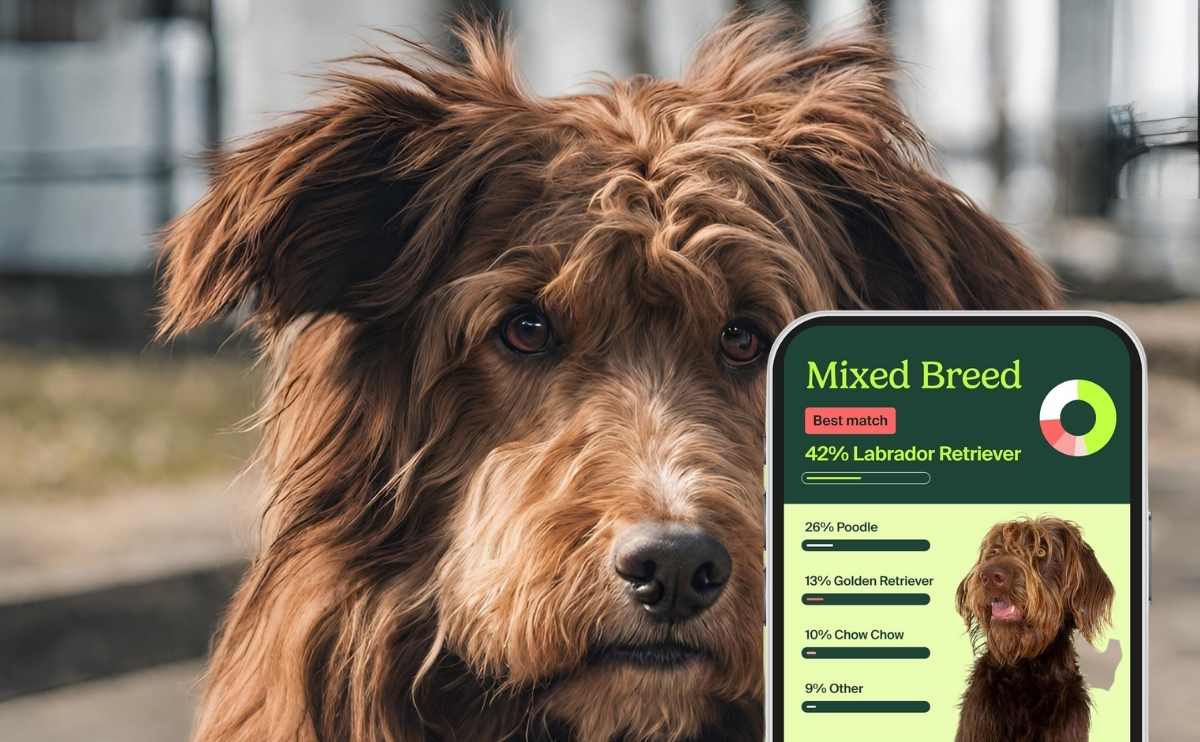When you purchase through links on our site, we may earn a commission. Here’s how it works.

Ever look down at your dog and wonder where she came from? We’re not talking about who her parents were, but something more profound. While human evolution is a hot topic, what about dog evolution?
Where do dogs come from? Did dogs evolve from another animal, or were they created by a greater being and placed on earth to be our best friends? While there’s a great deal of conflict on the evolution of dogs, there are some answers.
Where Do Dogs Come From?
There’s a lot of controversy about the evolution of dogs. But, researchers agree on one thing: dog’s ancestors are ancient wolves.
How did dogs evolve from wolves exactly? A long time ago wolves scavenged hunters’ leftovers, getting closer and closer to people and their camps. Gradually, the wolves became more friendly and produced offspring, which became even more comfortable around humans. Eventually, the wolves evolved into dogs and became man’s best friend.
Get an Embark Dog DNA Test to find out how “wolfy” your dog is
How Are Wolves Different From Dogs?

- Dogs eat in front of humans comfortably while wolves do not
- The modern domestic dog has a wider skull and shorter snout than a wolf
- Dogs don’t live in packs when on their own (this is why some scientists believe it’s an improper approach to have the human act as a pack leader during training)
- Wolves are monogamous, and wolf fathers help raise the young
- Dogs are promiscuous and don’t give their offspring much attention
History Of Domestication
Canis familiaris or Canis lupus familiaris, also known as the domesticated dog, has become man’s (and woman’s) best friend. However, the first domesticated dog is a topic some scientists cannot agree on.
Many believe the first domestic dog was about 15,000 years ago, while others think it’s double that figure. A recent study shows the Basenji breed dating back 30,000 years in central Africa. Throughout history and even today, these barkless dogs live and hunt with local tribespeople in the African Congo.1
In October 2020, new findings on fossil canine genomes came out related to dogs living in prehistoric times. Previously, scientists had only published the genomes of six ancient dogs and wolves. This new research, the most extensive study to date,2 analyzed 27 additional genomes giving new insights not yet uncovered. The new dog evolution data concluded that:
- By 11,000 years ago, dogs already separated into 5 lineages, which spread worldwide, with some lineages already recombining
- While it’s widely accepted among the research community that dogs became domesticated at least 15,000 years ago, this study suggests (but doesn’t decisively prove) that domestication began 20,000 years ago
- Modern dogs are not as genetically diverse as ancient dogs once were
- No new wolf DNA has entered dog genomes since dogs evolved from wolves more than 15,000 years ago
Where Do Dogs Originate From?
There’s some debate about the region where domesticated dogs originated from — Africa, East Asia, Europe, Mongolia, or Siberia. The 2020 study showed that ancient dogs in Africa descended from dogs in the Middle East. It also indicated that dogs’ geographic spread wasn’t always in conjunction with the same patterns of human migration.
The lack of evidence pinpointing dogs’ exact regional origination leaves more questions than answers. Why can’t scientists agree on this? Unfortunately, dog DNA is a confusing and complicated subject matter.
The Domestication Of Dogs And Rabies
There are an estimated 900 million dogs in the world3, some of which are pets while others are wild or homeless. More than 59,000 people per year die from rabies.4 A large majority of these deaths are due to dog bites, and most of those are from dogs who are wild or homeless since they aren’t getting their yearly vaccinations.
This is in part why it’s so critical that we spay and neuter our dogs so we get dogs off the streets and into homes where they can be taken to the veterinarian yearly for their vaccinations. The more dog domestication, the fewer deaths we will have due to rabies.
How Has Breeding Changed Dog Appearance And Health?
Breeding has negatively impacted the evolution of dogs. Check out this video to see how breeds have changed in just 100 years.
Find Your Dog’s Breed And Health History
While the verdict is still out on where exactly dogs came from and how long they’ve been around, you can do your own deep dive into your dog thanks to at-home dog DNA tests. With a swipe of a cheek swab, you can get detailed data showing your dog’s unique DNA makeup, including breed breakdown, possible relatives, potential health risks, and more.
Where do you think dogs come from?
Sources: [1] BMC Genomics, [2] New York Times, [3] WorldAtlas, [4] CDC
Tagged With:


